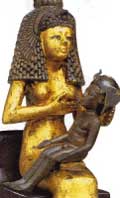Religion as Science |

|

|
| Written by Editor VOPUS | |||||
|
If we carry out a comparative study of the great religions we will find that they all rest upon the same pillars. The word RELIGION comes from the term “RELIGARE”, that is to say, the fundamental objective of all religious principles is to “re-link”, to return man to his own ivinity, to go back to the original starting point, to the BEING of experimental philosophy.
In fact, there is really ONE single RELIGION, UNIQUE and COSMIC. This religion adopts different religious shapes according to the times and needs of humankind. Consequently, religious struggles are absurd because, in essence, all religions are simply modifications of the UNIVERSAL COSMIC RELIGION. What we are asserting is most clear when considering the great symbolic and theological similarity of all religions. It is obvious that every mystical institution in the world loves the divine: ALLAH, BRAHMA, TAO, ZEN, I.A.O., INRI, MONAD, BEING, GOD, etc., etc., etc.
The martyrs, the saints, the virgins, the angels and the cherubim are just the gods, the demigods, the titans, the sylphides, the Cyclops and the messengers of pagan mythology. The Christian Trimurti - Father, Son and Holy Spirit - is related to all religious trimurtis: Osiris, Isis and Horus in Egypt; Brahma, Vishnu and Shiva in India; Kether, Chokmah and Binah in Kabbalah, etc. In all cults there are heavens, superior dimensions (the Aeons of the Hebraic Kabbalah), and there are also their counterparts: Hell, or the Roman “Avernus”, the Greek “Tartarus”, the Hindustani “Patala”, the Aztec “Mictlan”, the Mayan “Xibalba” etc. Jesus the Christ is represented among the Persians by Ormuz, Ahura-Mazda, the terrible enemy of Ahriman (Satan), whom we carry inside. Among the Hindustanis Krishna is the Christ, and Krishna’s Gospel is very similar to Jesus of Nazareth’s. Among the Egyptians the Christ is Osiris and everybody who incarnated him was, in fact, an Osirified. Among the Chinese Fu-Hsi is the Cosmic Christ, who wrote the I Ching, the book of changes, and appointed dragon ministers. Among the Greeks the Christ is called Zeus, the Roman Jupiter, the Father of all Gods. Among the Aztecs it is Quetzalcoatl, the Mexican Christ. In the German Edda it is Balder, the Christ who was murdered by Hoder, the God of War, with a mistletoe arrow, etc. In the same way we could quote the Cosmic Christ in thousands of archaic books and old traditions from millions of years before Jesus... 

Mary, Jesus’s mother, is the same as Isis, Juno, Demeter, Ceres, Maia, Tonantzin, etc., who receive their son in an immaculate conception. Fu-Hsi, Quetzalcoatl, Buddha, and many others are the result of immaculate conceptions, which are quite common in all ancient cults. Mary Magdalene is, without doubt, the same as Salambo, Matra, Ishtar, Astarte, Aphrodite and Venus in other religions. Mary Magdalene (the repented sinner) is the same as Gundrigia, Kundry, in the Wagnerian drama. All ancient cults have tried to lead man to the SOLE GREAT TRUTH, and this is why the similarities among all religious forms are so amazing; the repetition of symbols, ideas, etc. Sentences such as “I have the truth”, or “my religion is the only useful one” are extremely arrogant and denote an abject ignorance. However, following this order of ideas, we must take into account something extremely important: all the precepts, the teachings and the indications of religious cults are good for nothing if we do not experiment with them ourselves... Therefore, in regard to religion, we study religiousness in its deepest sense. Gnosis studies the science of religions. The religiousness that we have is highly scientific. Gnosis does not conform to accepting the existence of a god sitting on a throne and judging the living and the dead. Gnostics create faith based on experience, on verification, not on theories. 
In the times we are living, religion has divorced science and science has divorced religion. Some fight against the others, and the others against the former. All feel that they have the truth; nobody feels mistaken. However, a religion that despises science is a hollow religion; it is a hundred percent fanatic and dogmatic. A science that rejects religion is a materialistic and atheistic science, lacking all values and principles. The balsam that is sought by those who long for the truth is not in the opposites. Thesis and antithesis must flow together towards synthesis; we must enter a scientific spiritualism and a spiritual science; it is necessary to leave conceptual dualism aside; it is urgent and unpostponable to adopt a transcendental monism. A religious science and a scientific religion are needed. 
Science vs. Religion ArgumentComments (1)

dyran
said:
|
|||||
| thank u..I've been having this doubt for years..as I try to prove I was called a fool...I knew somewhere all this believes came together and trying to re-link..in my years living I've never seen humans separated through religions because I prefer not to be "one of them".. |
| < The Truth about Judas | Why is Easter a moveable feast? > |
|---|
| Science |
| Art |
| Philosophy |
| Mysticism/Religion |
| Barbelo: Gnosis Magazine |